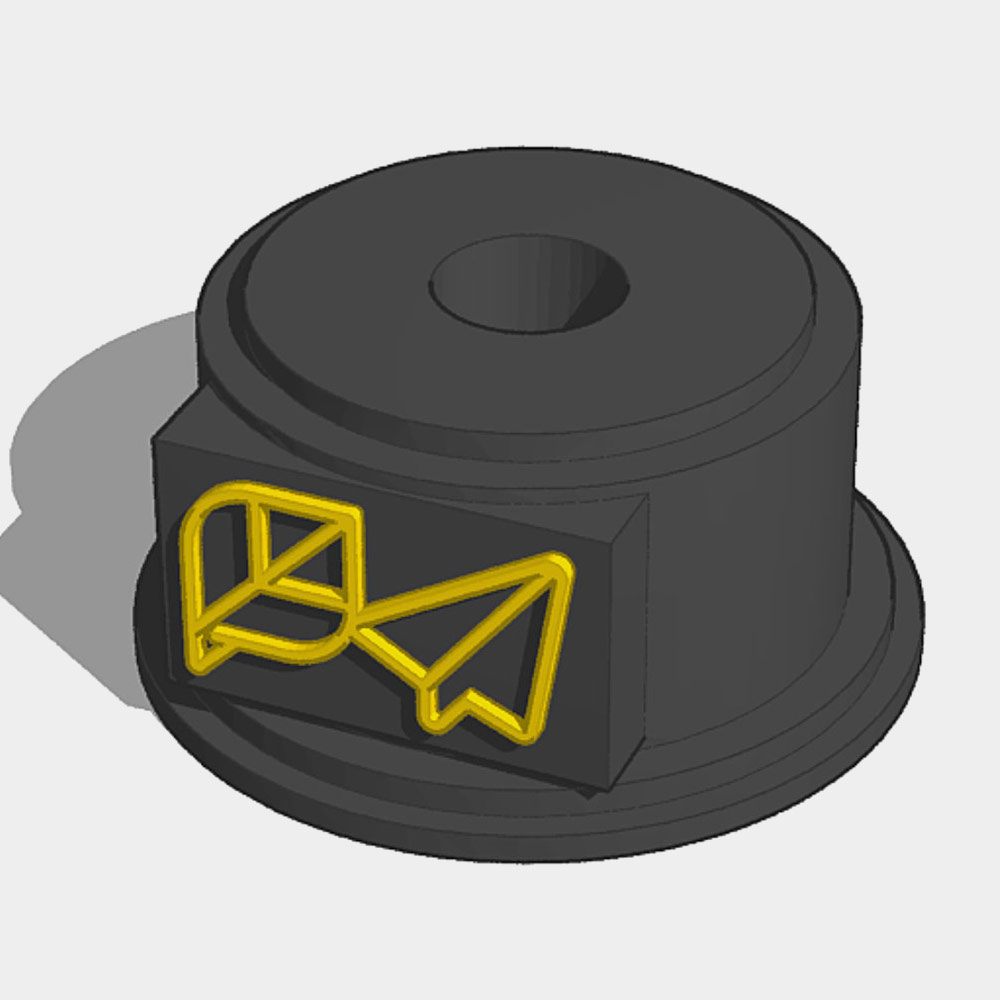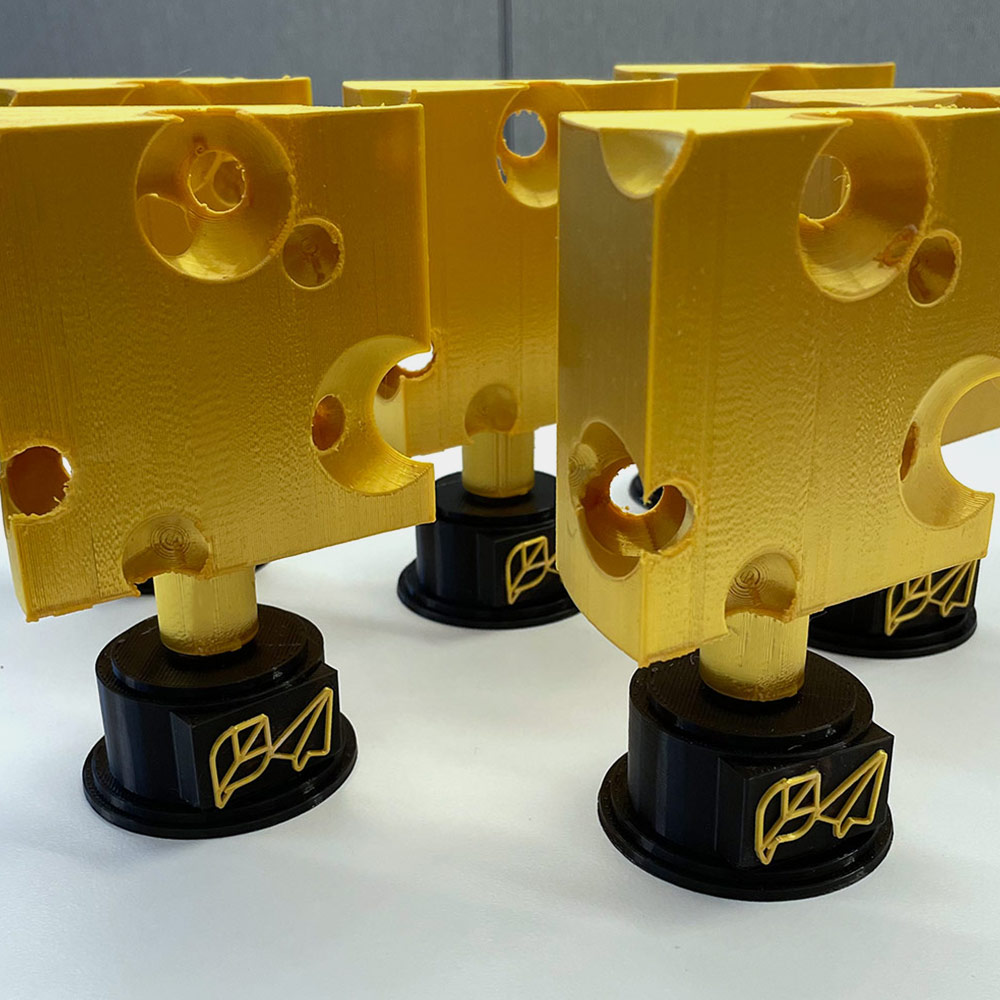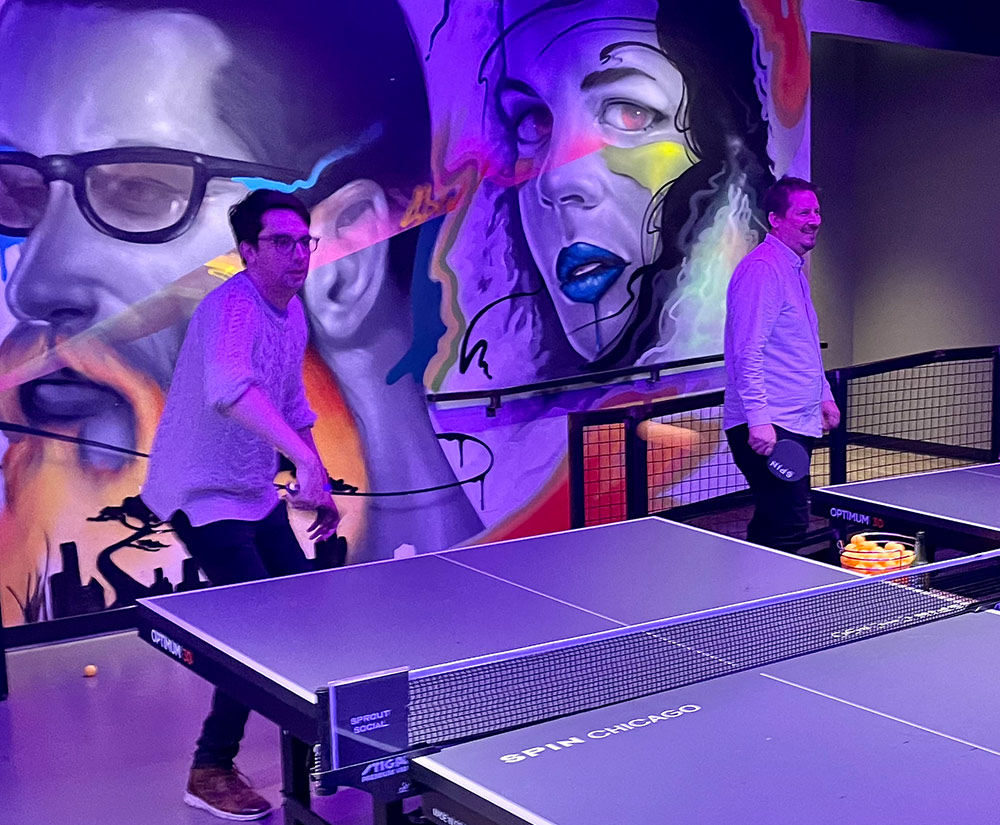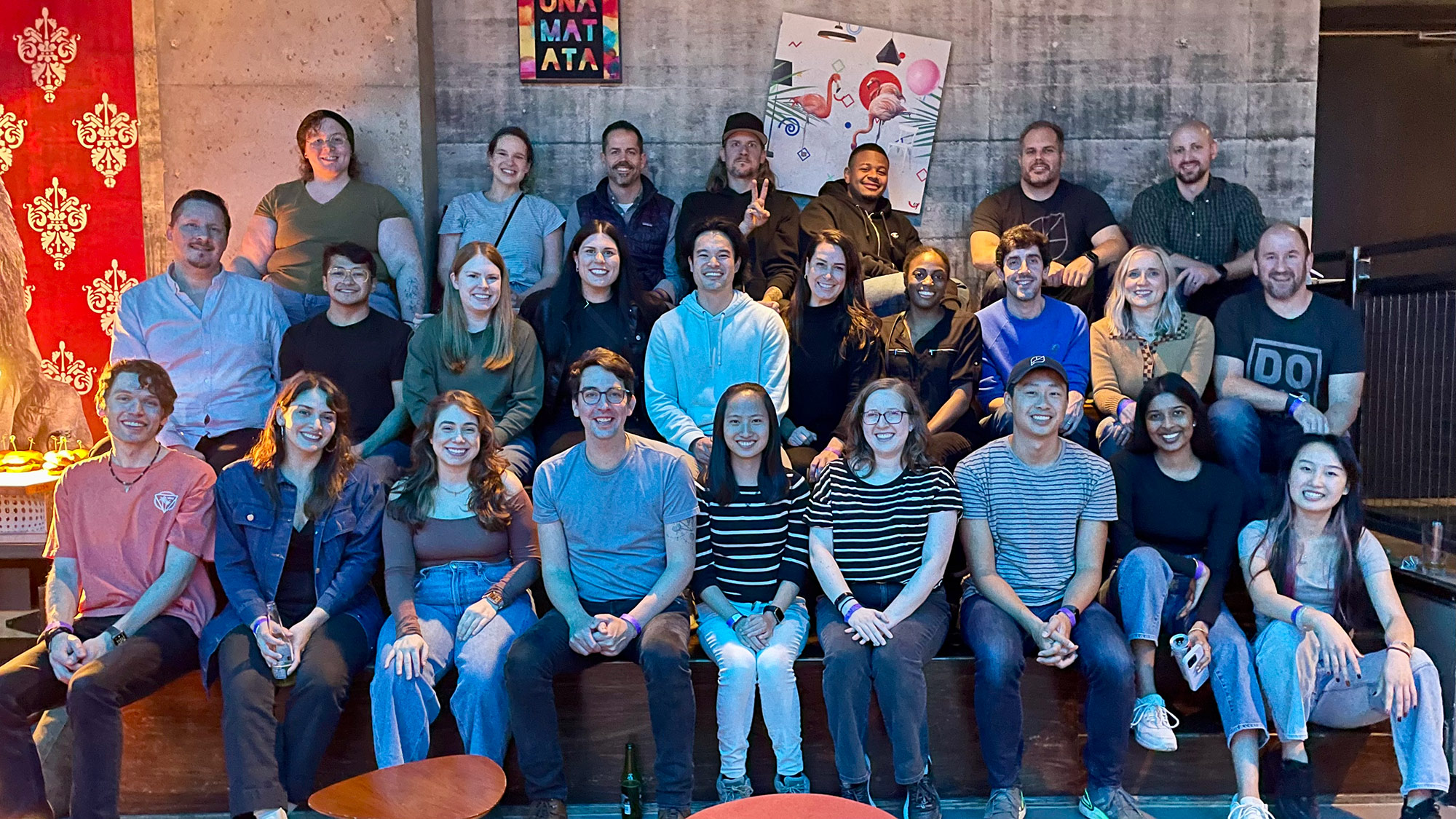For me, the creative wheels started turning when we set the dates for our product zone’s Chicago HQ onsite and decided to make a hackathon the focus of our 2 days together. I wanted to make this meetup a memorable one and create some kind of tangible reminder of the occasion. I also knew that our hackathon teams would work hard on their self-selected projects and that everyone who participated would deserve a fun reward.
The Hackathon Coin
Given that prompt, the first thing that came to mind was some kind of commemorative challenge coin. I enjoy 3D design projects and a coin seemed like a fun one, but what would a hackathon coin even have on it? I started looking for inspiration and found a Pirate coin on Thingiverse that seemed like a good foundation.



I imported the pirate coin file into Tinkercad, and started, well, tinkering. First, I removed the skull and replaced it with an extrusion of a paper plane icon which has become the logo for Sprout Social’s Publishing Zone. Next, I opened up Illustrator and wrapped the “Publishing Zone 2023 Hackathon” text around a circle, adding Sprout Social logos as dividers, and extruded that in Tinkercad as well. Finally, I wrapped an extra raised ring around the outside to make it feel like a modern coin.

I’d never printed anything metallic before, so this was a great excuse to order some shiny gold silk filament. I had also never really printed anything in bulk on our Flashforge Adventurer 4 and learned a lot in the process of trying to create 36 identical coins. The biggest lesson was the benefits of sequential printing. Normally, 3D printers work one layer at a time. If you attempt to print multiple objects, the first layer of each will be printed before moving on to the second. This can produce stringy artifacts between objects or worse, ruin the whole print job if something goes wrong with any layer.
With sequential, each object is printed individually. The only downside is that it requires quite a bit of space between objects. That meant I could only print 4 coins at a time. Over the course of the print jobs, I had a couple of individual coin failures and had to troubleshoot a clogged extruder once, but barely wasted any filament.
The Coveted Cheese Trophy
While the coins were a fun way to celebrate the hackathon itself, I also wanted to create an award for an in-person game. Last year, we did a Chicago Scavenger Hunt in 2022, and having medals for the first place squad made it a lot more competitive and fun.
For this onsite, we scheduled an hour of game time on the second day and only told everyone that the hackathon teams would be competing to determine which group was the best at collaboration and iterative design…and that there would be prizes for the winners.
The game we had planned was the Spaghetti Marshmallow Challenge, which my friend Amy Huizenga introduced me to as an activity at a past Downtown Orlando UX Meetup. It’s a popular team-building activity where groups compete to build the tallest free-standing structure using spaghetti, tape, string, and a marshmallow.
Since I already had gold filament for the coins, I decided to create trophies for the game winners. I didn’t want to go too literal with a gold spaghetti marshmallow tower, so again, I turned to Thingiverse for inspiration and discovered a cheese wedge trophy for a grilled cheese competition. The Publishing Zone has several cheese-themed profiles that we use to test features we’re building, so it seemed like a fitting award for a build well done.



While the cheese topper worked great printed in gold, I wasn’t a fan of the base options that came with it. Instead, I found a generic trophy base and used Tinkercad to add a hole in the top the same size as the cheese topper post. Then, I printed a small set of gold logos to glue onto the front. Not knowing how many people would be on each hackathon team, I built 6 of the cheese trophies.

All 8 of the teams took the challenge very seriously, working hard for the full 20 minutes to construct their towers. When time was up, only 5 of the teams had standing towers. I ended up having enough trophies to split them between the 2 teams with the tallest towers.
We didn’t use any of our activity budget for the hackathon or game, so we were also able to schedule a team event at SPIN Chicago on the first night of the onsite. After we had that scheduled, a couple of other product zones that were in town that week asked to join us, which made for a great party. Between the ping pong outing, the successful hackathon, the competitive game, and the 3d printed mementos, it was definitely a fun and memorable couple of days for our zone.

This post was originally published on Medium.
